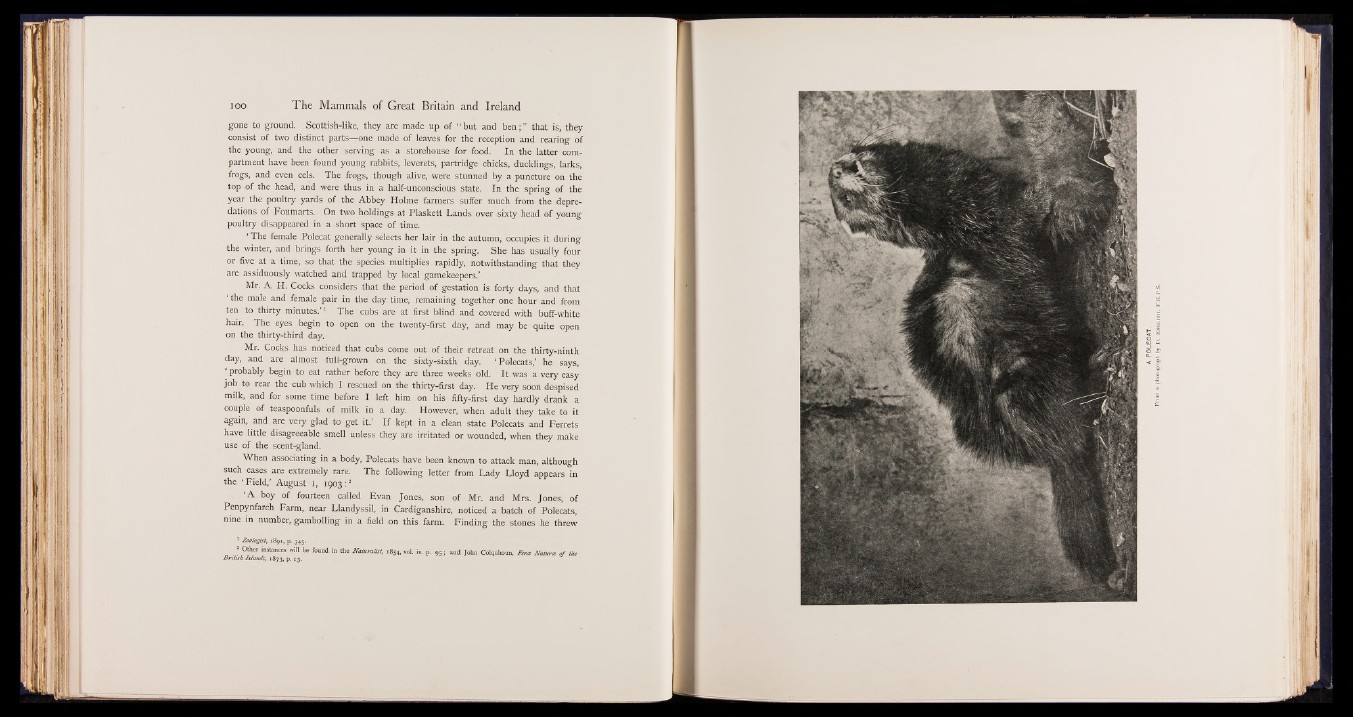
gone to ground. Scottish-like, they are made up of " but and ben; ” that is, they
consist of two distinct parts—one made of leaves for the reception and rearing of
the young, and the other serving as a storehouse for food. In the latter compartment
have been found young rabbits, leverets, partridge chicks, ducklings, larks,
frogs, and even eels. The frogs, though alive, were stunned by a puncture on the
top of the head, and were thus in a half-unconscious state. In the spring of the
year the poultry yards of the Abbey Holme farmers suffer much from the depredations
of Foumarts. On two holdings at Plaskett Lands over sixty head of young
poultry disappeared in a short space of time.
‘ The female Polecat generally selects her lair in the autumn, occupies it during
the winter, and brings forth her young in it in the spring. She has usually four
or five at a time, so that the species multiplies rapidly, notwithstanding that they
are assiduously watched and trapped by local gamekeepers.’
Mr. A. H. Cocks considers that the period of gestation is forty days, and that
‘ the male and female pair in the day time, remaining together one hour and from
ten to thirty minutes.’ 1 The cubs are at first blind and covered with buff-white
hair. The eyes begin to open on the twenty-first day, and may be quite open
on the thirty-third day.
Mr. Cocks has noticed that cubs come out of their retreat on the thirty-ninth
day, and are almost full-grown on the sixty-sixth day. ‘ Polecats,’ he says,
‘ probably begin to eat rather before they are three weeks old. It was a very easy
job to rear the cub which I rescued on the thirty-first day. He very soon despised
milk, and for some time before I left him on his fifty-first day hardly drank a
couple of teaspoonfuls of milk in a day. However, when adult they take to it
again, and are very glad to get it.’ I f kept in a clean state Polecats and Ferrets
have little disagreeable smell unless they are irritated or wounded, when they make
use of the scent-gland.
When associating in a body, Polecats have been known to attack man, although
such cases are extremely rare. The following letter from Lady Lloyd appears in
the ‘ Field,’ August i, 19 0 3 :2
‘ A boy of fourteen called Evan Jones, son of Mr. and Mrs. Jones, of
Penpynfarch Farm, near Llandyssil, in Cardiganshire, noticed a batch of Polecats,
nine in number, gambolling in a field on this farm. Finding the stones he threw
1 Zoologist, 1891, p. 345.
* Other instances trill be found in the Naturalist, 1854, voL iv. p. 95; and John Colquhoun, F 'r * Natum o f the
British Islands, 1873, p. 13.